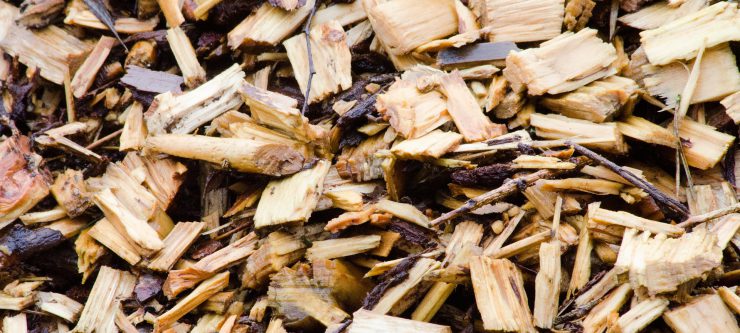Landscaping with wood mulch against the foundation of your house can increase curb appeal and add health to your lawn. It also comes with precise installation steps and even hazards down the road. Here’s an overview of what to expect if you’re planning on laying wood mulch around your home.
The Purpose of Mulching
Adding a layer of mulch around your home has a few different benefits:
Preventing weeds. A layer of mulch a few inches deep can help repress weed growth. Some homeowners use a layer of landscaping fabric or plastic for an added barrier against unwanted weeds.
Plant moisture. Mulch retains moisture from rain and sprinklers. This extra moisture helps feed shrubs and flowers, especially during dry periods.
Better appearance. Mulching adds color, texture and can hide parts of your foundation.
Possible Dangers of Wood Mulch
While wood mulch can keep your garden and soil healthy, it can cause serious damage to your property if not correctly installed.
Fire hazard. Some types of wood mulch are more flammable than others, like shredded western red cedar. Other types, however, can still ignite if they become too dry.
Pests and insects. Mulch is known for harboring termites and other insects. Termites thrive in the moisture held by mulch and feed on the cellulose in the wood. They also like the cover of mulch and use it as an avenue to get into the wooden framework of your home.
For these reasons, it’s recommended that you leave a one-foot-wide strip of soil between your home and your mulch, or 6 inches of space or more between mulch and your siding or framework.
If you’re purchasing a house, ask your home inspector about mulching near your foundation. Depending on your region and landscaping plans, your home may be more at risk than others for mulching dangers.
Other Types of Mulch
If you don’t want to use woodchip mulch, there are loads of other types of mulching, each with its own benefit.
Rubber mulch. Mulch made from shredded rubber can last for decades, doesn’t decompose, and can come in virtually any color.
Gravel or rocks. Heavier mulch like gravel and rocks won’t blow away or move easily. They also won’t decompose, catch fire or fade in color as quickly as other types of mulch.
Straw. Straw is good for insulating during cold periods. It’s lightweight, so it’s easier to move and lay down. It’s also cheaper compared to other mulch.
Pine needles. If you have plants that feed off of acidic soil, pine needles are a great option. Pine needles raise the PH level of soil, come cheap and give a unique look to your yard.
Steps to Adding Wood Mulch
- Uproot any weeds. Spray the area with weed killer for added protection.
- Make sure the soil is sloped away from the foundation. The guideline is a 5% slope down or 6 inches lower for every 10 feet away from the foundation.
- For another barrier from weeds, layer the area with landscape fabric or plastic. If you plan on planting, cut slits wide enough for the shrubs or flowers to grow.
- Add edging to keep the mulch from falling into your lawn. You can use plastic or metal edging or even stone or brick.
- Add your mulch. You’ll only need 2 to 4 inches of cover. Even out the mulch with a rake and water to add moisture and prevent it from blowing away.
